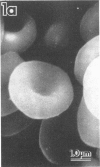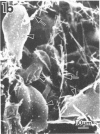Abstract
Chrysotile asbestos causes lysis of red blood cells. It has been proposed that the mechanism of hemolysis is mediated through interactions between asbestos and cell membrane glycoproteins. Our studies support this concept and the following results are reported. Electron microscopy shows that asbestos fibers distort red blood cells and bind to cell membranes which may become wrapped around the fibers. This reaction is prevented by pretreatment of the cells with neuraminidase. The distribution of lectins which bind to membrane glycoproteins is altered by treating the cells with asbestos. Cell distortion and membrane deformation consequent to asbestos treatment correlate with a clear increase in the ratio of intracellular Na+:K+ ions.
Full text
PDF
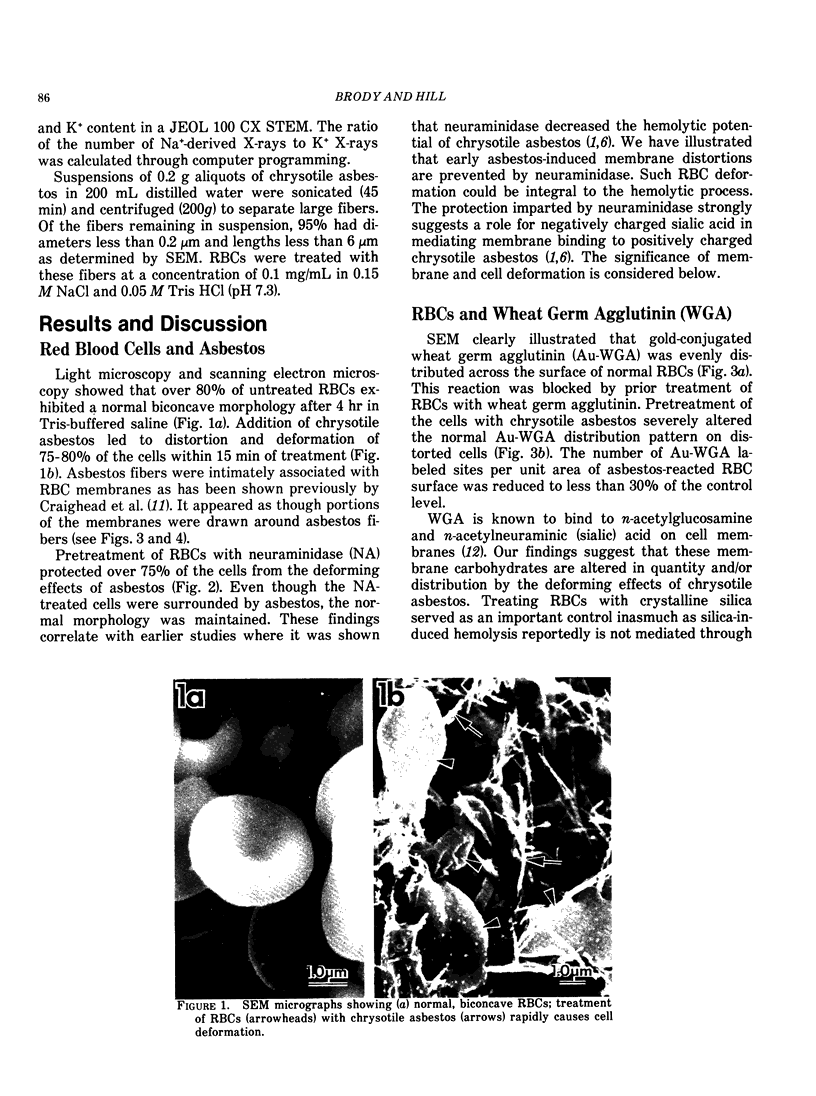
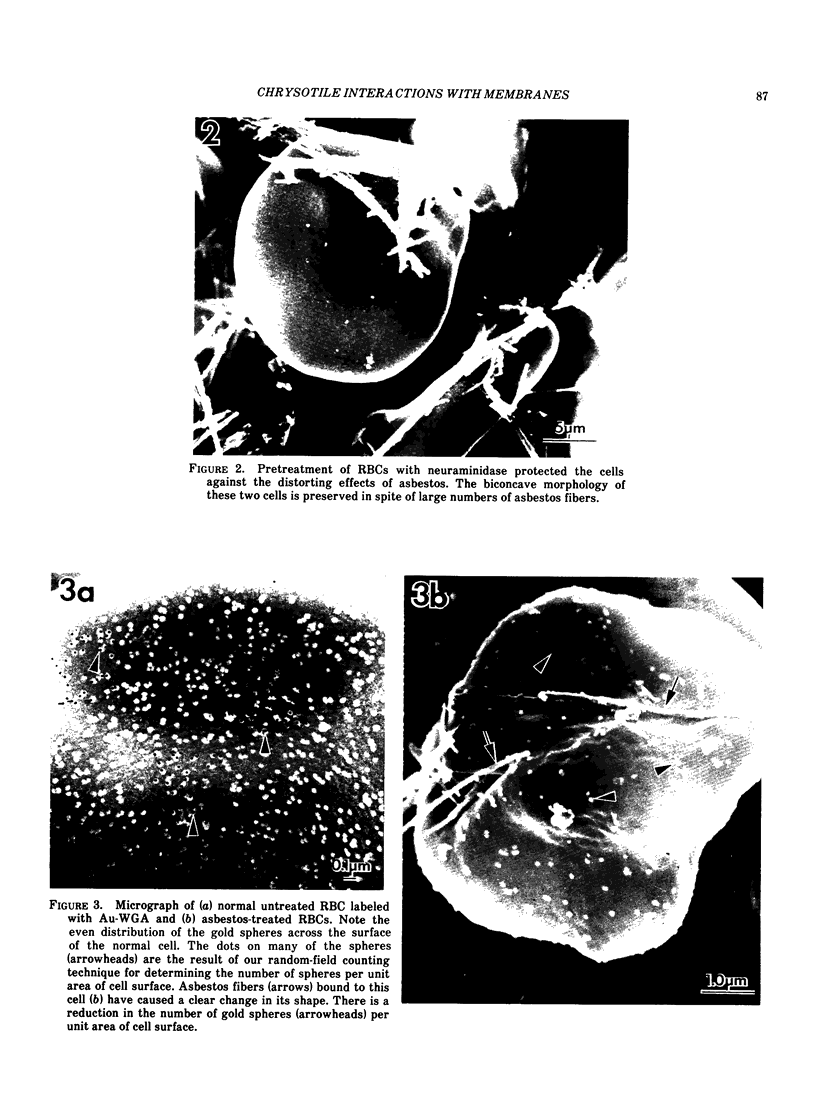
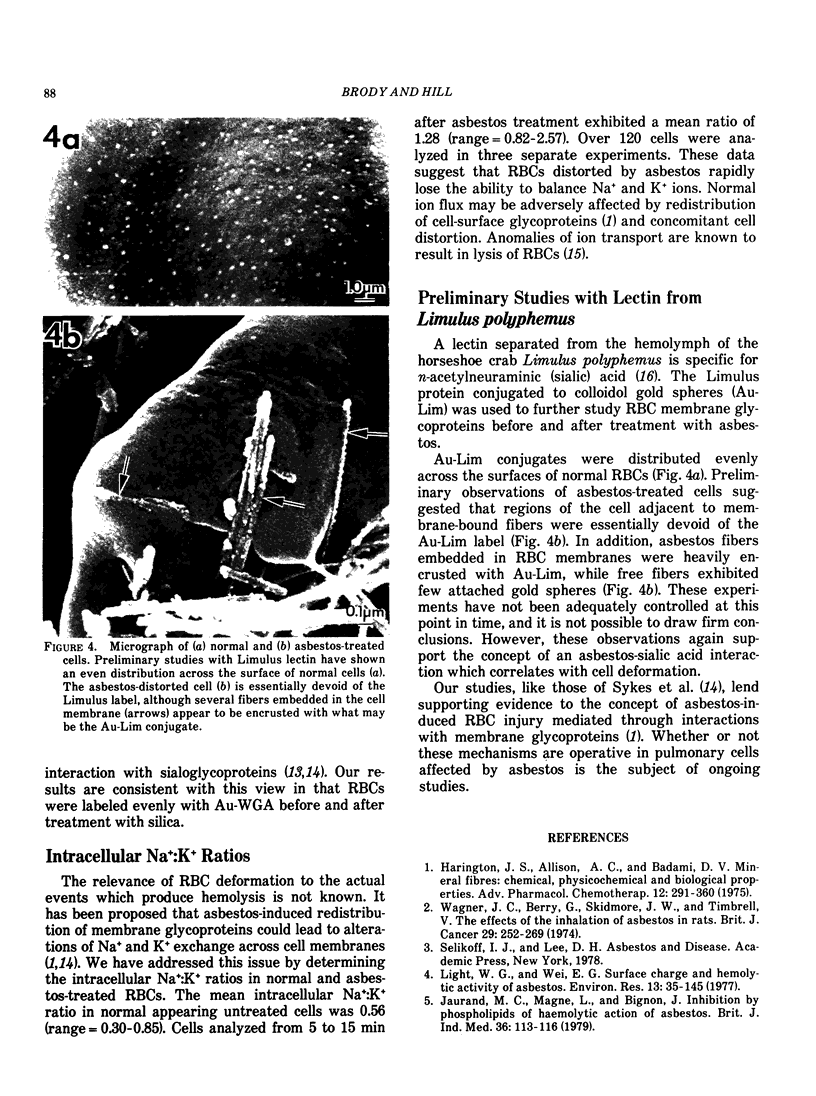
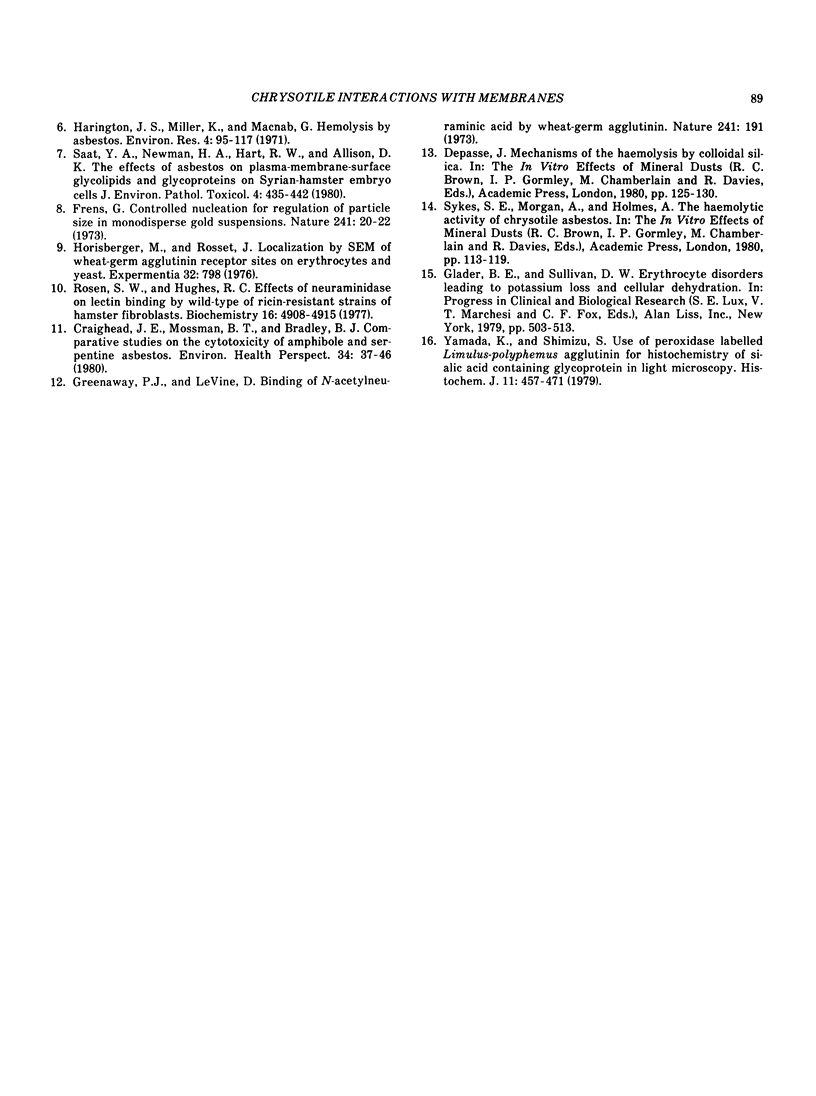
Images in this article
Selected References
These references are in PubMed. This may not be the complete list of references from this article.
- Craighead J. E., Mossman B. T., Bradley B. J. Comparative studies on the cytotoxicity of amphibole and serpentine asbestos. Environ Health Perspect. 1980 Feb;34:37–46. doi: 10.1289/ehp.803437. [DOI] [PMC free article] [PubMed] [Google Scholar]
- Harington J. S., Allison A. C., Badami D. V. Mineral fibers: chemical, physicochemical, and biological properties. Adv Pharmacol Chemother. 1975;12(0):291–402. doi: 10.1016/s1054-3589(08)60223-9. [DOI] [PubMed] [Google Scholar]
- Harington J. S., Miller K., Macnab G. Hemolysis by asbestos. Environ Res. 1971 Apr;4(2):95–117. doi: 10.1016/0013-9351(71)90038-7. [DOI] [PubMed] [Google Scholar]
- Jaurand M. C., Magne L., Bignon J. Inhibition by phospholipids of haemolytic action of asbestos. Br J Ind Med. 1979 May;36(2):113–116. doi: 10.1136/oem.36.2.113. [DOI] [PMC free article] [PubMed] [Google Scholar]
- Light W. G., Wei E. T. Surface charge and hemolytic activity of asbestos. Environ Res. 1977 Feb;13(1):135–145. doi: 10.1016/0013-9351(77)90012-3. [DOI] [PubMed] [Google Scholar]
- Rosen S. W., Hughes R. C. Effects of neuraminidase on lectin binding by wild-type and ricin-resistant strains of hamster fibroblasts. Biochemistry. 1977 Nov 1;16(22):4908–4915. doi: 10.1021/bi00641a026. [DOI] [PubMed] [Google Scholar]
- Saat Y. A., Newman H. A., Hart R. W., Allison D. K. The effects of asbestos on plasma membrane; surface glycolipids and glycoproteins of Syrian hamster embryo cells. J Environ Pathol Toxicol. 1980 Aug;4(1):435–441. [PubMed] [Google Scholar]
- Wagner J. C., Berry G., Skidmore J. W., Timbrell V. The effects of the inhalation of asbestos in rats. Br J Cancer. 1974 Mar;29(3):252–269. doi: 10.1038/bjc.1974.65. [DOI] [PMC free article] [PubMed] [Google Scholar]
- Yamada K., Shimizu S. The use of peroxidase-labelled Limulus polyphemus agglutinin for the histochemistry of sialic acid-containing glycoproteins in light microscopy. Histochem J. 1979 Jul;11(4):457–471. doi: 10.1007/BF01002773. [DOI] [PubMed] [Google Scholar]



